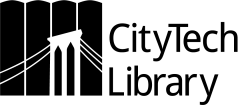What is Copyright?
Copyright is a form of protection granted by U.S. law to the creators of “original works of authorship” including scholarly and creative works. Creators do not have to register their work or attach a copyright notice in order for copyright protection to apply to the work; the protection exists automatically from the time the work is created.
What “rights” are protected under U.S. Copyright Law?
Copyright holders have exclusive rights to:
- reproduce their work
- prepare derivative works
- distribute copies of their work
- perform their work publicly
- display their work publicly
Some important things to keep in mind…
- Copyright protections apply to both scholarly and creative works that you create and works that you use.
- Just because something is posted online, that doesn’t mean it’s “open”…it may have been illegally posted by someone else.
- Copyright doesn’t last forever. Older works and classics may be in the public domain. Read more about Copyright Terms and the Public Domain on this Cornell University Guide.
- There are a few exceptions written into U.S. Copyright Law. You’ve likely heard of one called fair use that’s frequently cited by teachers.
What is Fair Use?
Fair use is a limitation on the exclusive rights of a copyright holder. If a proposed use meets the “fair use” criteria, and the user hasn’t agreed to abide by other terms—such as through a license agreement or a website’s terms of use—a copyrighted work may be used without permission.
Fair Use and O.E.R.
The context of OER is significantly different from other kinds of educational uses where materials are only distributed to a small selection of students (think photocopies in a classroom or an article you upload to a site that requires a login like Blackboard). Since OER are meant to be freely shared with students and other educators in and outside of City Tech, this changes the purpose and character of use significantly.
Instead of thinking about OER contexts as similar to other classroom contexts, for the purposes of copyright it might be more helpful to think about OER as similar to materials that you might integrate into your own published scholarship. For example, if you were including data or an image from another sources in an article, you would need to potentially obtain permission as well as attribute the original source.
How can I tell if my proposed use is “fair”?
You don’t have to be a copyright expert to determine if the use of copyrighted material is “fair.” Evaluations of fair use must include a consideration of these four factors:
- Purpose and character of the use
- Nature of the original work
- Amount and substantiality of portion used
- Effect on the potential marketplace
Analyze whether the use you have in mind is fair using this tool



